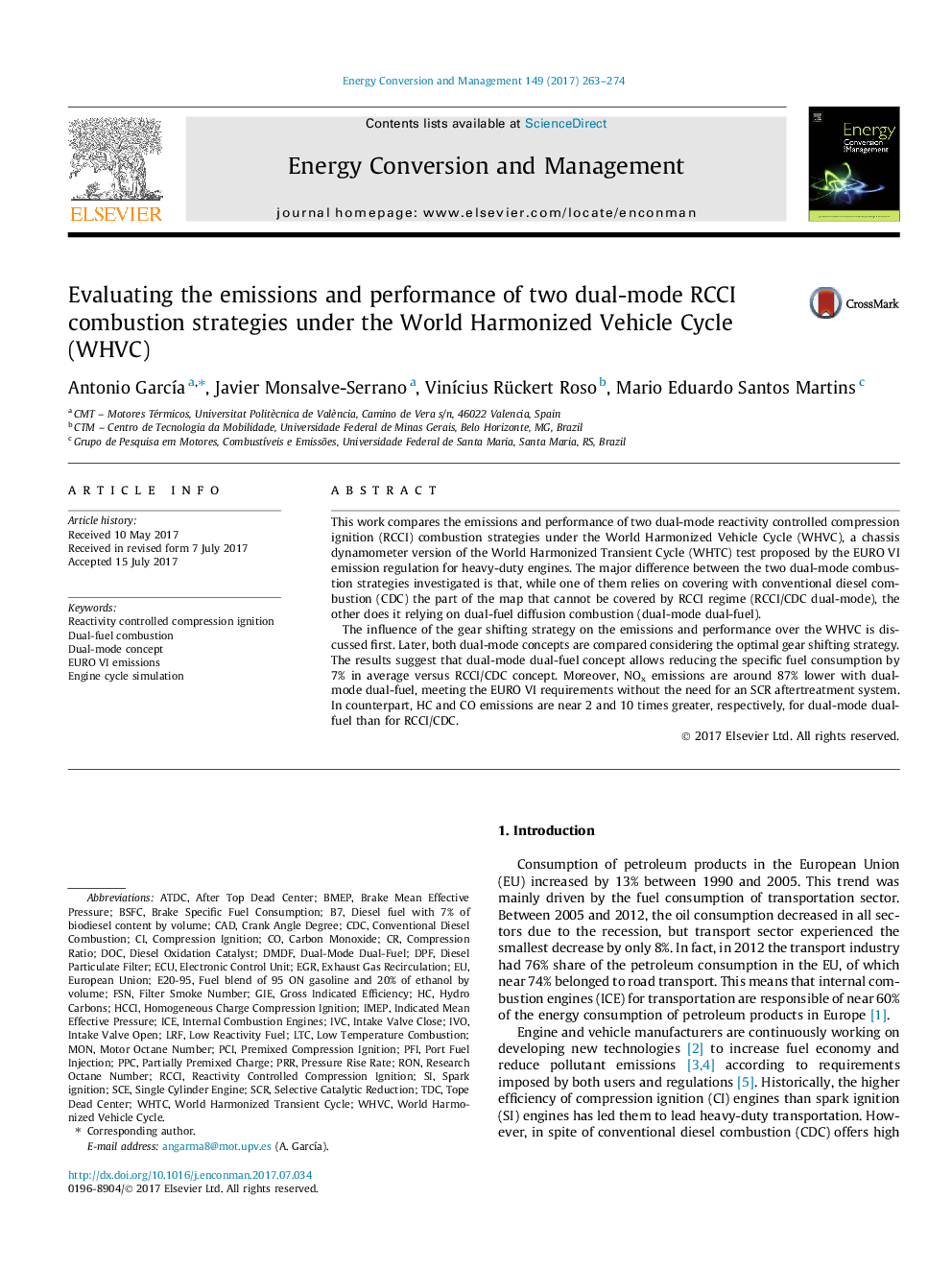| Article ID | Journal | Published Year | Pages | File Type |
|---|---|---|---|---|
| 5012443 | Energy Conversion and Management | 2017 | 12 Pages |
Abstract
The influence of the gear shifting strategy on the emissions and performance over the WHVC is discussed first. Later, both dual-mode concepts are compared considering the optimal gear shifting strategy. The results suggest that dual-mode dual-fuel concept allows reducing the specific fuel consumption by 7% in average versus RCCI/CDC concept. Moreover, NOx emissions are around 87% lower with dual-mode dual-fuel, meeting the EURO VI requirements without the need for an SCR aftertreatment system. In counterpart, HC and CO emissions are near 2 and 10 times greater, respectively, for dual-mode dual-fuel than for RCCI/CDC.
Keywords
FSNLTCDOCRCCIPFIECUIMEPSCEPPCDPFCDCBMEPPRRPCIIVCLRFIVOGIEgross indicated efficiencypartially premixed chargeWHTCaTDCEGRBSFCTDCDMDFHCCIReactivity controlled compression ignitionEuropean UnionLow temperature combustionDual-fuel combustionConventional diesel combustioncompression ignitionResearch Octane Numberafter top dead centerbrake mean effective pressurebrake specific fuel consumptionport fuel injectionspark ignitioncrank angle degreeintake valve openRONHomogeneous Charge Compression Ignitionmotor octane numberFilter Smoke Numberintake valve closeCADDiesel particulate filtercarbon monoxideSingle cylinder engineInternal combustion enginesMONPressure rise rateCompression ratioIndicated mean effective pressureelectronic control unitdiesel oxidation catalystSelective catalytic reductionexhaust gas recirculationIceSCR
Related Topics
Physical Sciences and Engineering
Energy
Energy (General)
Authors
Antonio GarcÃa, Javier Monsalve-Serrano, VinÃcius Rückert Roso, Mario Eduardo Santos Martins,
